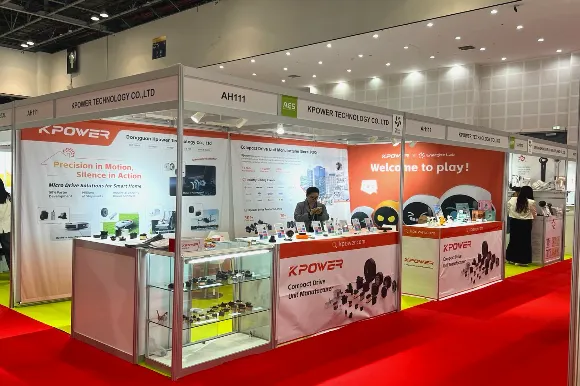In a world where precision, efficiency, and compact power are increasingly demanded, DC planetary gear motors stand out as one of the most innovative solutions available today. From robotics and automation to medical devices and electric vehicles, their versatility makes them a cornerstone of modern engineering. To fully appreciate what sets them apart, it’s essential to understand the principles behind their design, operation, and the broad spectrum of applications they serve best.

At their core, DC planetary gear motors combine a direct current (DC) motor with a planetary gear system—a miniature universe of gears working together seamlessly. Imagine the intricate dance of planets orbiting a star; this is an apt analogy for the planetary gear setup. The mechanism comprises a central sun gear, multiple planet gears revolving around it, a ring gear encasing the planets, and a carrier that holds the planets in position while transmitting torque. When powered, this setup translates high-speed rotation into high torque, all within a remarkably compact size.
What makes planetary gear systems particularly attractive is their exceptional load distribution. Unlike traditional gearboxes that might bear load on a single gear set, planetary gears spread torque across multiple gears—improving durability and efficiency. This distribution reduces wear and tear, extends lifespan, and allows for higher power densities without sacrificing size constraints. For engineers and designers, this means creating smaller, more robust machines with smooth and reliable performance over extended periods.
DC planetary gear motors maximize these benefits. The integration of a DC motor with a planetary gear system results in a device capable of precise control and high torque output. Because of their design, they can operate at high speeds with minimal vibration and noise—factors critical for sensitive environments like medical labs or consumer electronics. Moreover, they offer excellent speed regulation, meaning that whether you need a slow and deliberate movement or a brisk rotation, these motors can adapt efficiently.
A key advantage of using DC motors as drivers is their inherent compatibility with modern electronic control systems. Variable voltage input allows for easy speed adjustment without the need for complex mechanical changes. Paired with a planetary gearbox, it becomes possible to create highly customizable motion profiles—crucial for automation tasks, robotic arms, or even precise camera positioning systems. Furthermore, these gear motors often feature integrated encoders, allowing for real-time monitoring of position and speed, thereby enabling highly accurate control in complex systems.
Another aspect worth highlighting is the longevity and maintenance aspect. Due to their balanced load distribution and high-quality materials, DC planetary gear motors typically require less maintenance compared to traditional gear-driven systems. This reduces downtime and operational costs, making them particularly appealing in industrial settings where reliability is paramount. Additionally, their sealed designs can protect sensitive components from dust, moisture, and other environmental factors, further extending their service life.
The manufacturing landscape also benefits immensely from the widespread adoption of DC planetary gear motors. In the realm of industrial automation, where consistency and repeatability are king, these motors serve as the backbone of conveyor systems, robotic pick-and-place devices, and packaging machinery. Their ability to deliver smooth, controlled motion in a compact form factor enables the manufacturing of smaller, more efficient devices and systems—sometimes even enabling innovations that were impossible with bulkier traditional motors and gearboxes.
In the consumer sector, DC planetary gear motors are behind the sleek operation of countless devices. Electric toothbrushes, camera autofocus mechanisms, and small-scale robotics—these all rely on the power and precision that planetary gear systems paired with DC motors can offer. The trend toward miniaturization and smarter devices makes these motors an ideal choice for designers seeking to balance size, power, and control.
In terms of technological advancements, recent innovations in materials and design have pushed the boundaries even further. For example, the use of advanced composite materials and precision engineering allows for ultra-quiet, high-efficiency planetary gear motors. The integration of intelligent control circuits can optimize performance dynamically, adapting to changing load conditions and operational requirements in real-time. This is particularly valuable in applications demanding high responsiveness, like drone stabilization or medical surgical robots.
As we look toward the future, it's clear that the role of DC planetary gear motors will only grow. Their inherent adaptability aligns well with emerging fields such as electric mobility and smart manufacturing. Continuous improvements in miniaturization, energy efficiency, and control electronics promise to unlock new horizons—from tiny implantable medical devices to large-scale industrial robots.
Stay tuned as we delve deeper into the specific types of planetary gear motors, their installation considerations, and the critical factors influencing their selection in our upcoming discussion. From understanding gear ratios to exploring their impact on energy consumption, this journey into the realm of DC planetary gear motors will reveal why they are truly a marvel of modern engineering.
Kpower has delivered professional drive system solutions to over 500 enterprise clients globally with products covering various fields such as Smart Home Systems, Automatic Electronics, Robotics, Precision Agriculture, Drones, and Industrial Automation.




































